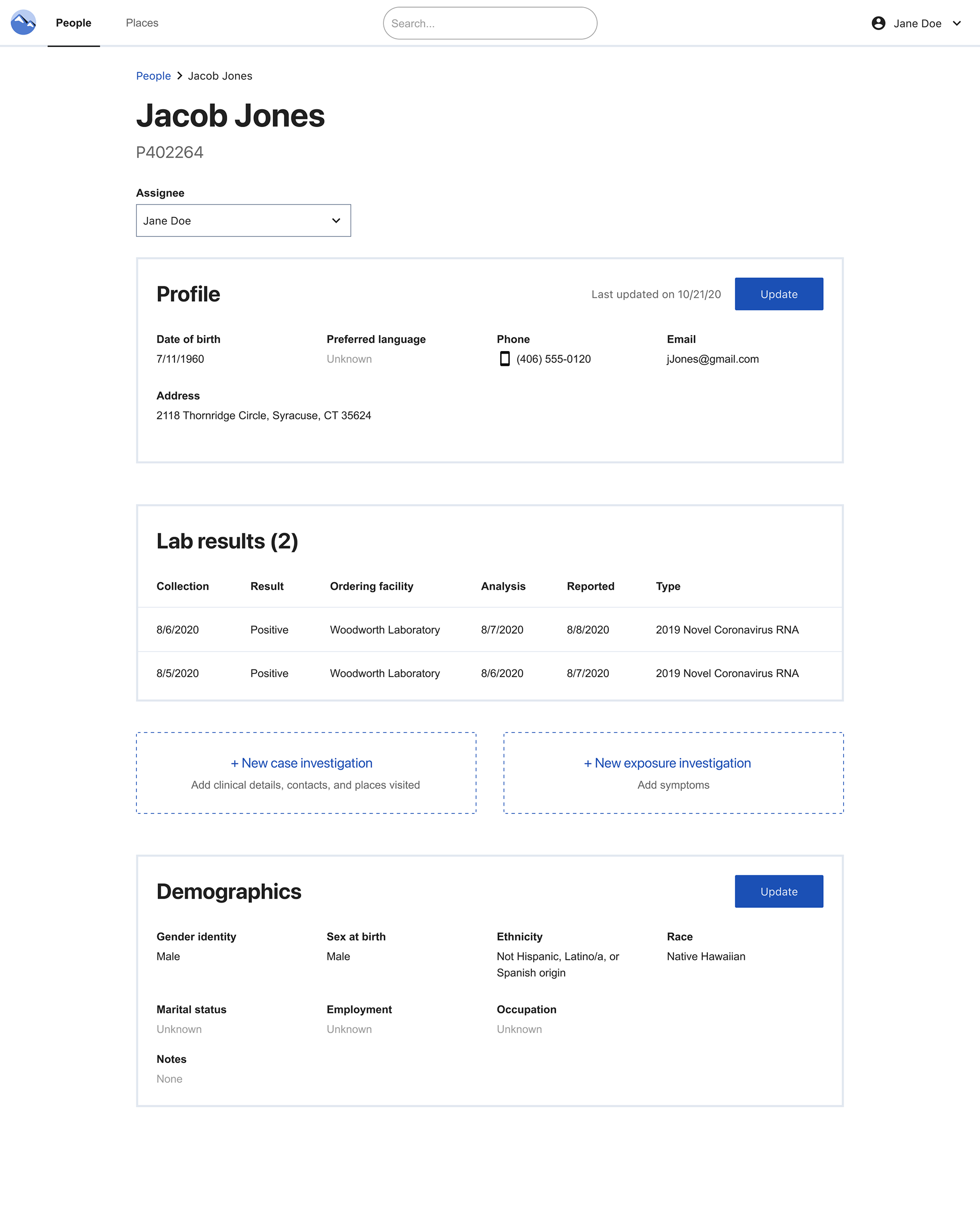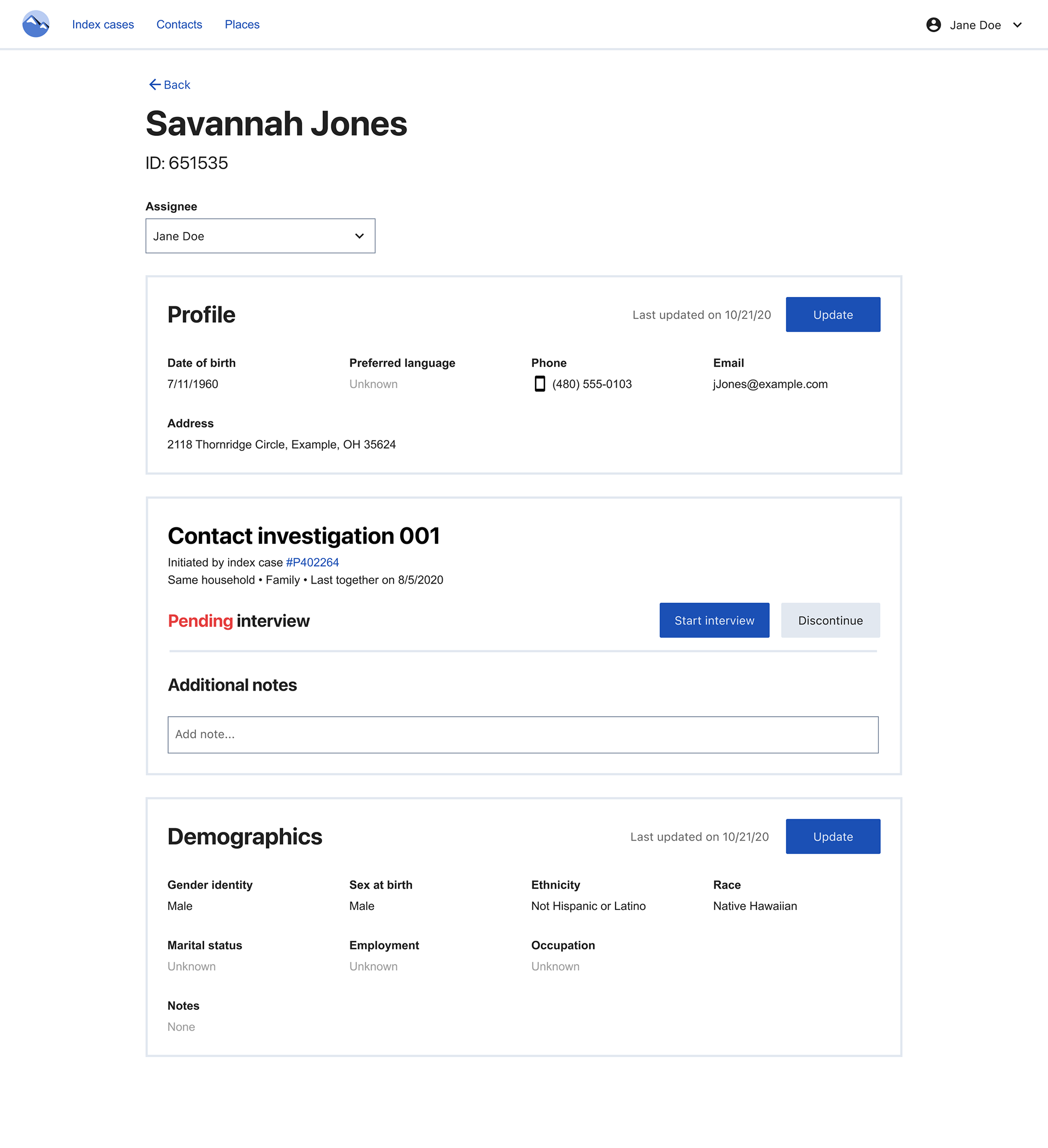When New York state started having large spikes in COVID-19 cases, its Department of Health struggled to keep up with the volume of incoming test results and the reporting of those test results to its citizens. Resolve to Save Lives - Vital Strategies partnered with Geometer LLC's Geometric Services Incorporated (GSI) stepped-in to improve the efforts to inform and aid New York State's citizens. The success of our efforts led to future partnerships with New Jersey State and Ohio State.
Date: March 2020 - February 2021
Platform: Various web, mobile and technology applications
Locations: New York, USA; New Jersey, USA; Ohio, USA
Role: Product manager
Vital Strategies and GSI created several different products to support in the COVID-19 relief efforts. The following is a summary of the products and the problems they helped solve. I specifically worked on two: (1) Viaduct and (2) EpiCenter:
Viaduct
Viaduct is a system that moves data between a test database and a case management system. For New York State, the test database was ECLRS (a database that contained all the state's COVID test result data) and the case management system was CommCare (a system chosen by the state to help manage the contact tracing and case investigations conducted for COVID-19 outbreaks).
New York State began rolling out contact tracing to most New York counties on May 15, 2020. The initial version of Viaduct improved infrastructure of the CommCare ingest process, focusing on three key areas:
1. Speed: Faster and more frequent delivery (eventually in near-real time)
2. Explicable Issues: Better logging for more transparent problem identification and higher confidence in ongoing improvements; Viaduct will surface data problems
3. No worse data: Comparable data integrity and quality as a starting point; Viaduct will not introduce duplicates
There were, however, issues with the initial version. During the weeks since the launch, county officials began reporting concerns about the integrity of the test results being loaded into CommCare. Due to the multiple organizations involved in the pipeline, validating and identifying the underlying issues became troublesome. Not only was it difficult to find which organization was responsible for the root problem, but also solutions would often impact every other organization as well, requiring complex rollouts.
The initial pipeline transferred tests across several systems managed by numerous partners: (1) ECLRS, (2) NYeC, (3) Cloudticity, (4) Geometer [Viaduct], and (5) CommCare.
This resulted in a subsequent version to improve the quality and speed of the test result data with the #1 requirement from the state’s epidemiologists was to not drop a test; even if the data was dirty (missing fields, has invalid entries, etc). It was still important to pass it along.
Viaduct version 2 aimed to accomplish the following:
1. Simplify the pipeline by reducing the number of involved organizations
2. Implement robust logging to help identify critical issues, and systems in place to address them before a user report was filed
3. Provide transparency into the pipeline to help county health departments build trust in the pipeline, due to the importance of requirement #1
Viaduct did NOT solve the following:
1. Roundtrip any updated CommCare reports into CDESS
2. Consolidate contact and case patient records
3. Update to the telephony workflow
4. Update additional fields passed through to CommCare
With the collaborated effort of our partners, the team was able to accomplish the goals set out for version 1 and version 2 of Viaduct. The transfer of test result data from ECLRS to CommCare went from 10 days all the way down to almost 3 hours with a confidence of reaching CommCare cleanly within 24 hours.
EpiCenter
EpiCenter is a case management system that supports the contact tracing workflows and the cluster investigation workflows. It was a product designed to address the frustration related to current case management systems that were predominantly designed for STI disease tracking. Because COVID-19 was so easily contractable in comparison to an STI, the current case management systems did not support the rapid outbreaks happening within counties and across the country.
EpiCenter aimed to solve this problem. It was a case management system specifically designed for viral infections that spread at the rates of COVID-19 and supported the adjusted/newer protocols to monitor and manage the spread within communities.
USERS
EpiCenter was a web browser application specifically designed around three users: (1) case investigators and (2) contact tracers and (3) epidemiologists.
The tool supported specific workflows including: ongoing ingestion of new cases, case investigation workflow (includes viewing and editing a patient's latest data), and contact tracing workflow (including viewing and editing a contact's latest data).
FEATURES
Users had the ability to see a queue of who to call, a patient's profile page that supported interview workflows and case investigation workflows, up to date test information (positive, negative, and indeterminate), an admin view of the system with roles and permissions, and a dashboard of county metrics that could identify outbreak locations and support the workflows related to notifying affected people and the ingestion of their information into EpiCenter.
PROCESS
The team applied a lean UX and agile development process to iterate on the EpiCenter application. We initially conducted empathy research to learn about the nurses (case investigators) and individuals (contact tracers) conducting the interviews and what information they needed to input into the system. Ultimately, it was epidemiologists who would use this information to help inform the local health officials. Over the course of nine months and several sprints of designing, usability testing, and building, the team eventually released a fully functional case management system that could be used by willing counties. Eventually, Resolved to Save Lives took over the product and the adoption of it.

Patient profile

Finished contact monitoring
